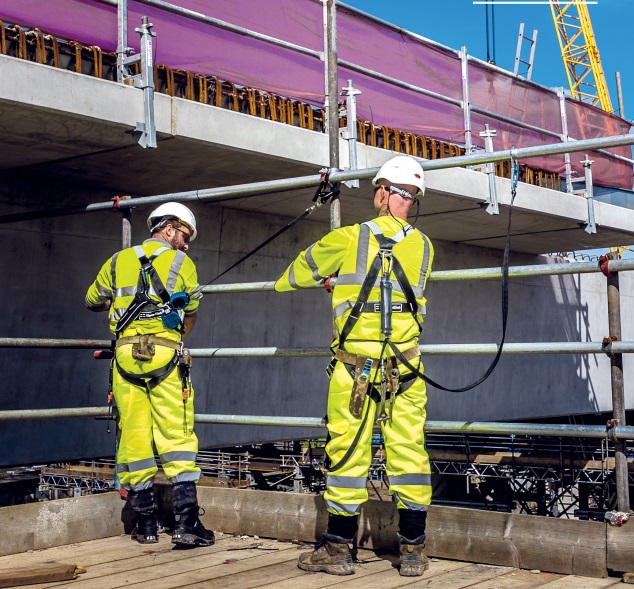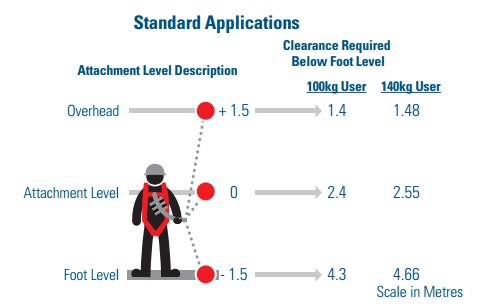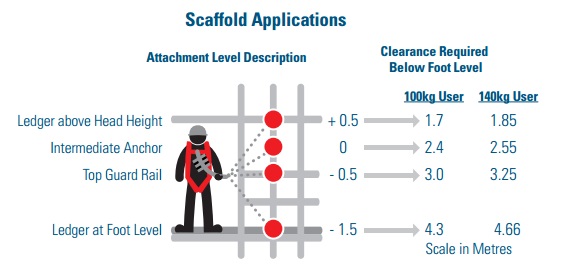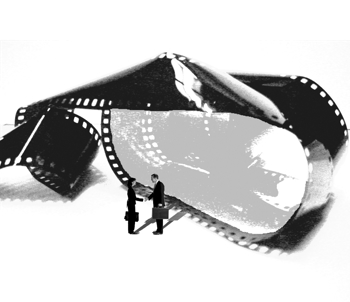Dynamic self-retracting lanyard
Dynamic self-retracting lanyards (DSL) are safety devices used for working at height. They work by minimising the fall distance, which in turn reduces the distance taken to dissipate the energy while keeping the forces created to a safe and acceptable level. This ensures that users are protected against falls from height, the injuries resulting from collisions with hazards and the forces exerted by the safety equipment.
A new milestone was achieved by SpanSet UK, with their 2016 launch of DSL 2. This delivers a 50% improvement compared to the fall clearance requirements set out in BS EN 355:2002 Personal protective equipment against falls from a height – Energy absorbers.
The product builds upon the original DSL by reducing safe clearance heights even further.
The problems associated with falling relate to both the freefall distance and the arrest distance.
The greater the freefall distance, the longer the arrest distance, but the more likely it is that there will be collisions with obstacles or a surface. Previously, lanyards could only provide the choice of freedom of movement or security, but were incapable of providing the right length for each task that would keep the potential fall to the minimum.
The DSL 2 is suitable in situations where there is low clearance and a lack of overhead anchorages (such as scaffold construction). It retracts exactly like a Fall Arrest Block but can be used as an Energy Absorbing Lanyard, anchored anywhere from below foot level to overhead. As a hybrid of Fall Arrest Blocks and Energy Absorbing Lanyards, the DSL 2 provides a balance in that the risks of stopping too quickly or too slowly are ameliorated.
In testing, the DSL 2 arrested falling completely before a conventional lanyard even became taut. The DSL 2 has been tested for users up to 140 kg.
[edit] Related articles on Designing Buildings Wiki
Featured articles and news
Retired firefighter cycles world to raise Grenfell funds
Leaving on 14 June 2025 Stephen will raise money for youth and schools through the Grenfell Foundation.
Key points for construction at a glance with industry reactions.
Functionality, visibility and sustainability
The simpler approach to specification.
Architects, architecture, buildings, and inspiration in film
The close ties between makers and the movies, with our long list of suggested viewing.
SELECT three-point plan for action issued to MSPs
Call for Scottish regulation, green skills and recognition of electrotechnical industry as part of a manifesto for Scottish Parliamentary elections.
UCEM becomes the University of the Built Environment
Major milestone in its 106-year history, follows recent merger with London School of Architecture (LSE).
Professional practical experience for Architects in training
The long process to transform the nature of education and professional practical experience in the Architecture profession following recent reports.
A people-first approach to retrofit
Moving away from the destructive paradigm of fabric-first.
International Electrician Day, 10 June 2025
Celebrating the role of electrical engineers from André-Marie Amperè, today and for the future.
New guide for clients launched at Houses of Parliament
'There has never been a more important time for clients to step up and ...ask the right questions'
The impact of recycled slate tiles
Innovation across the decades.
EPC changes for existing buildings
Changes and their context as the new RdSAP methodology comes into use from 15 June.
Skills England publishes Sector skills needs assessments
Priority areas relating to the built environment highlighted and described in brief.
BSRIA HVAC Market Watch - May 2025 Edition
Heat Pump Market Outlook: Policy, Performance & Refrigerant Trends for 2025–2028.
Committing to EDI in construction with CIOB
Built Environment professional bodies deepen commitment to EDI with two new signatories: CIAT and CICES.
Government Grenfell progress report at a glance
Line by line recomendation overview, with links to more details.
An engaging and lively review of his professional life.
Sustainable heating for listed buildings
A problem that needs to be approached intelligently.
50th Golden anniversary ECA Edmundson apprentice award
Deadline for entries has been extended to Friday 27 June, so don't miss out!
CIAT at the London Festival of Architecture
Designing for Everyone: Breaking Barriers in Inclusive Architecture.
Mixed reactions to apprenticeship and skills reform 2025
A 'welcome shift' for some and a 'backwards step' for others.






























